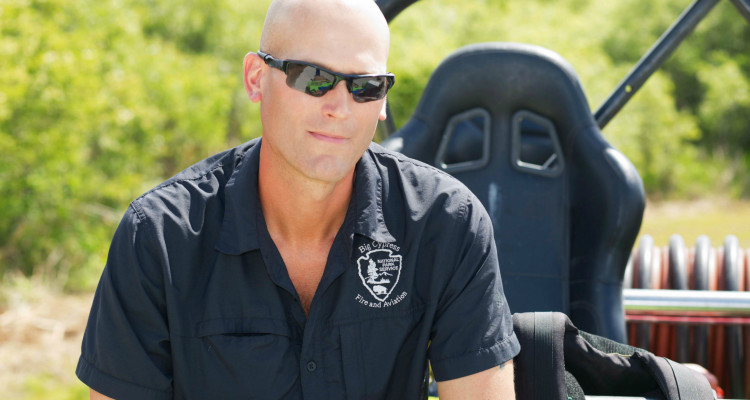If you want to be tough like Jordan McKnight, you’ll need the right training gear.
Okay, gear alone won’t make you awesome, but it’s a start. For Jordan McKnight, athleticism is crucial. Not just because it helps him pursue excellence in trail running and ultra-marathoning, but because it could also save his life. For the last 15 years, McKnight has worked as a wildland firefighter. He’s also competed in 45 marathons and 15 or more ultras during that time. For McKnight, these two parts of his life are inseparable.
Running frequently on trails allows McKnight to focus on perseverance through pain. A typical day as a wildland firefighter can include parachuting into a remote location and hiking 10-15 miles with 130-150 pounds of gear. “It requires you to be focused on the next step. Breathing. Posture. Balance. It transports you out of your head and brings you to where your next footfall is going to be. The tough running days are as physically demanding as anything else I’ve ever done,” he says.
Here’s the training gear McKnight never hits the trails without:
“I’m a total data nerd, and I consider this essential, especially when I’m running trails that I’ve never been on. Having it on my wrist helps me push myself when I’m slacking. I also use it during occasional forays into cross training—biking, swimming, even hiking.”
“I hate replacing shoes, because it seems like new versions never fit like the old ones. These were great on rocky trails in Arizona, where I lived before I moved to Florida, and have proven pretty competent on sandy and mixed trails in Florida, too. Someday I’ll have to replace them…”
“Wildland firefighters have to take a fitness test every year. We have to complete three miles in 45 minutes with a 45 lb. pack or vest. You’re not supposed to run, which, for a runner, makes the test much harder. A few times a year I like to go out and see how fast I can do it. The vest is also a great companion for some bodyweight exercises like push-ups, pull-ups, lunges, etc.”
“This is the Cadillac (or Audi) of wildland fire packs. Mystery Ranch builds a fire pack onto what is basically a heavy-duty backpacking frame. We typically carry these with 30-45 pounds of gear, but sometimes load them up for overnight trips on fires. If you’re going to be wearing your pack for 14 hours, hiking up hills (we travel all over the country), busting through brush, and have to do it 14 days in a row, this is one of the best packs you can get.”
“I only run with my phone when I’m the duty officer at work (and thus on call to initiate a fire response), but I really like some of the fitness apps. I’ve been using Sworkit Pro [an app that provides workout plans] for a while, and it’s great, especially when I’m on the road. I spend as many nights traveling to meetings and conducting training as I do on fires nowadays, and all of the exercises in Sworkit Pro can be done with a floor, a wall, and a chair, which is perfect when you’re stuck in a hotel room! Other than that, the phone is mostly a tool that distracts me from workouts.”
“I don’t know where my wife found this super-thick yoga mat, but it’s the perfect companion to Sworkit Pro, stretching after long runs, abs. When you’re doing your workout on the gym floor of a fire operations center, you want a yoga mat. I don’t really do a lot of yoga, but I have fond memories of when I had the time to do it!”
Want more training gear? Read on:
What’s In The Bag? Triathlon Training Essentials From Julia Wreski
What’s In The Bag? Charla Goodnight’s Training Essentials For Mind And Body

